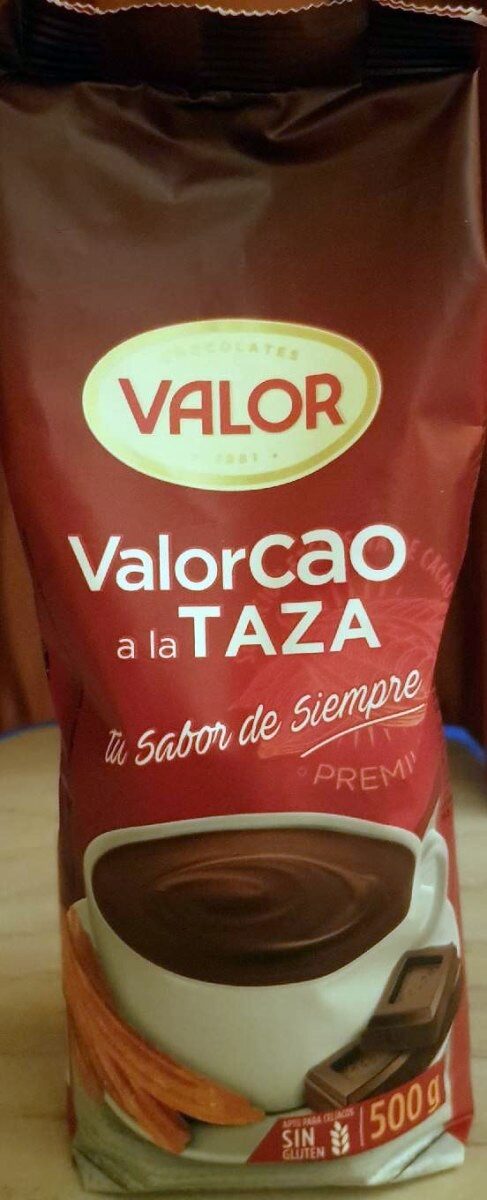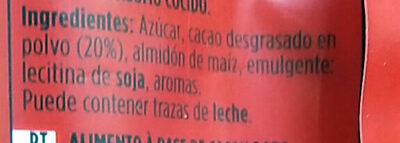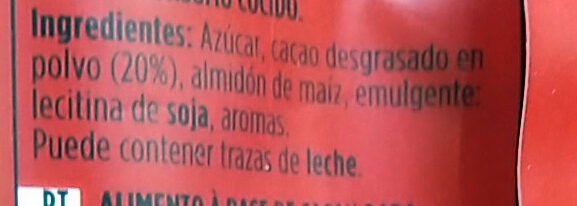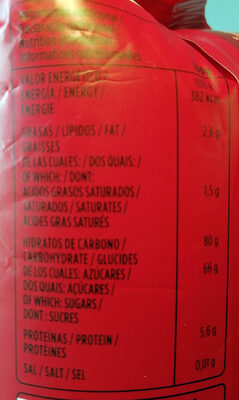Valorcao a la taza - Valor - 500 g (17.6 oz)
Aquesta pàgina del producte no està completa. Podeu ajudar a completar-la editant-la i afegint-hi més dades a partir de les fotos ja disponibles, o fent-ne més amb l'aplicació de androide o iPhone / iPad. Gràcies!
×
Codi de barres: 8410109113051 (EAN / EAN-13)
Nom comú: Preparado alimenticio al cacao para su consumo cocido
Quantitat: 500 g (17.6 oz)
Empaquetament: Plàstic, en:Bag
Marques: Valor
Categories: en:Beverages and beverages preparations, Begudes, Cacau i derivats, en:Beverage preparations, Pols de coco i xocolata, Begudes instantànies, en:Chocolate powders
Etiquetes, certificacions, premis:
Lliure de gluten, Punt verd, Fet a Espanya
Llocs de fabricació o processament: Alicante, España
Codi de traçabilitat: RSIA15I28312
Enllaç a la pàgina del producte en el lloc oficial del productor: https://www.valor.es/chocolate/valorcao-...
Botigues: Mercadona
Matching with your preferences
Entorn
Petjada de carboni
Empaquetament
Transport
Report a problem
Fonts de dades
Producte afegit per kiliweb
Última modificació de la pàgina del producte per icaicedo89.
La pàgina del producte, també editada per 5m4u9, alia, ecoscore-impact-estimator, elcoco, inf, musarana, openfoodfacts-contributors, prepperapp, thaialagata, yuka.U1o4Wk80VUluTlV1bThBbThEZnEzZUp4NkxqM1hqMmRGL0pLSVE9PQ.








